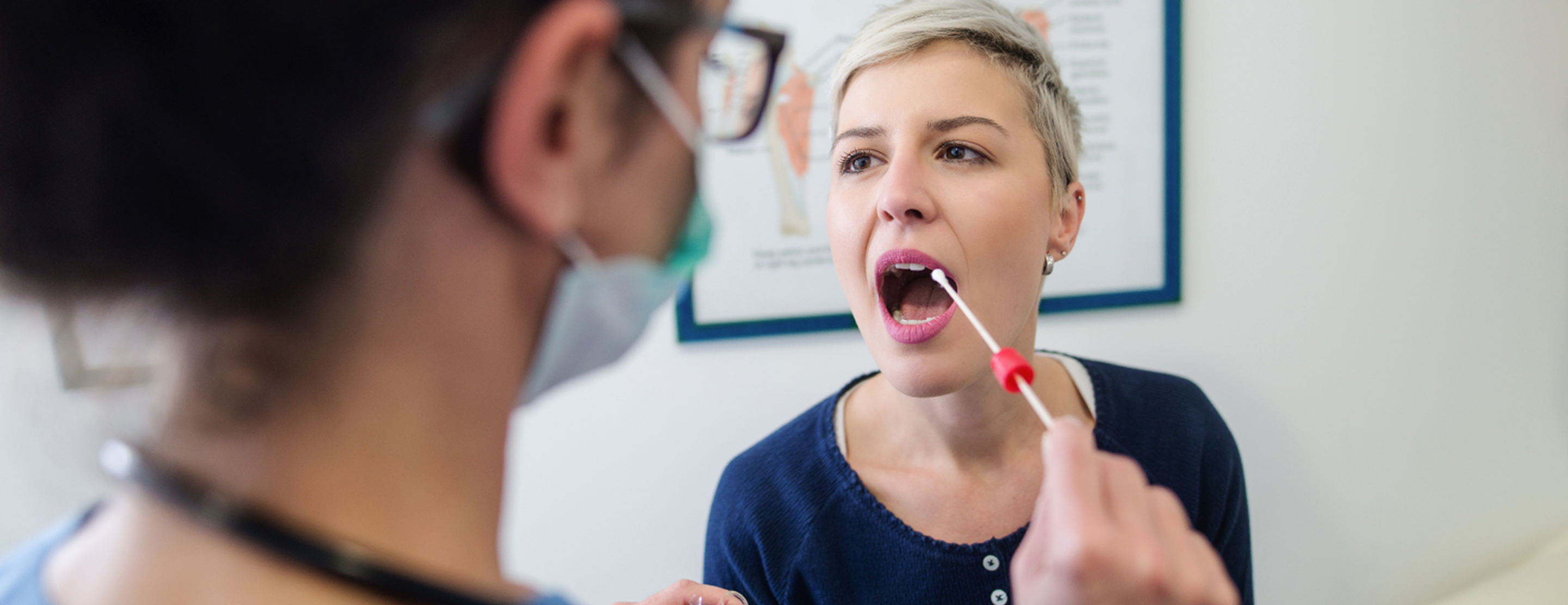
Throat swab culture
Definition
A throat swab culture is a laboratory test that is done to identify germs that may cause infection in the throat. It is most often used to diagnose
Alternative Names
Throat culture and sensitivity; Culture - throat
How the Test is Performed
You will be asked to tilt your head back and open your mouth wide. Your health care provider will rub a sterile cotton swab along the back of your throat near your tonsils. You will need to resist gagging and closing your mouth while the swab touches this area.
Your provider may need to scrape the back of your throat with the swab several times. This helps improve the chances of detecting bacteria.
How to Prepare for the Test
DO NOT use antiseptic mouthwash before this test.
How the Test will Feel
Your throat may be sore when this test is done. You may feel like gagging when the back of your throat is touched with the swab, but the test only lasts a few seconds.
Why the Test is Performed
This test is done when a throat infection is suspected, particularly strep throat. A throat culture can also help your provider determine which antibiotic will work best for you.
Normal Results
A normal or negative result means no bacteria or other germs that may cause a sore throat were found.
What Abnormal Results Mean
An abnormal or positive result means bacteria or other germs that can cause a sore throat were seen on the throat swab.
Risks
This test is safe and easy to tolerate. In very few people, the sensation of gagging may lead to an urge to vomit or cough.
References
Nussenbaum B, Bradford CR. Pharyngitis in adults. In: Flint PW, Haughey BH, Lund V, et al, eds. Cummings Otolaryngology: Head and Neck Surgery. 6th ed. Philadelphia, PA: Elsevier Saunders; 2015:chap 9.
Shulman ST. Group A streptococcus. In: Kliegman RM, Stanton BF, St. Geme JW, Schor NF, eds. Nelson Textbook of Pediatrics. 20th ed. Philadelphia, PA: Elsevier; 2016:chap 183.
Weber R. Pharyngitis. In: Kellerman RD, Bope ET, eds. Conn's Current Therapy 2018. Philadelphia, PA: Elsevier Saunders; 2018:50-52.
Review Date: 02/24/2018
The information provided herein should not be used during any medical emergency or for the diagnosis or treatment of any medical condition. A licensed physician should be consulted for diagnosis and treatment of any and all medical conditions. Call 911 for all medical emergencies. Links to other sites are provided for information only -- they do not constitute endorsements of those other sites. Copyright ©2019 A.D.A.M., Inc., as modified by University of California San Francisco. Any duplication or distribution of the information contained herein is strictly prohibited.
Information developed by A.D.A.M., Inc. regarding tests and test results may not directly correspond with information provided by UCSF Health. Please discuss with your doctor any questions or concerns you may have.





